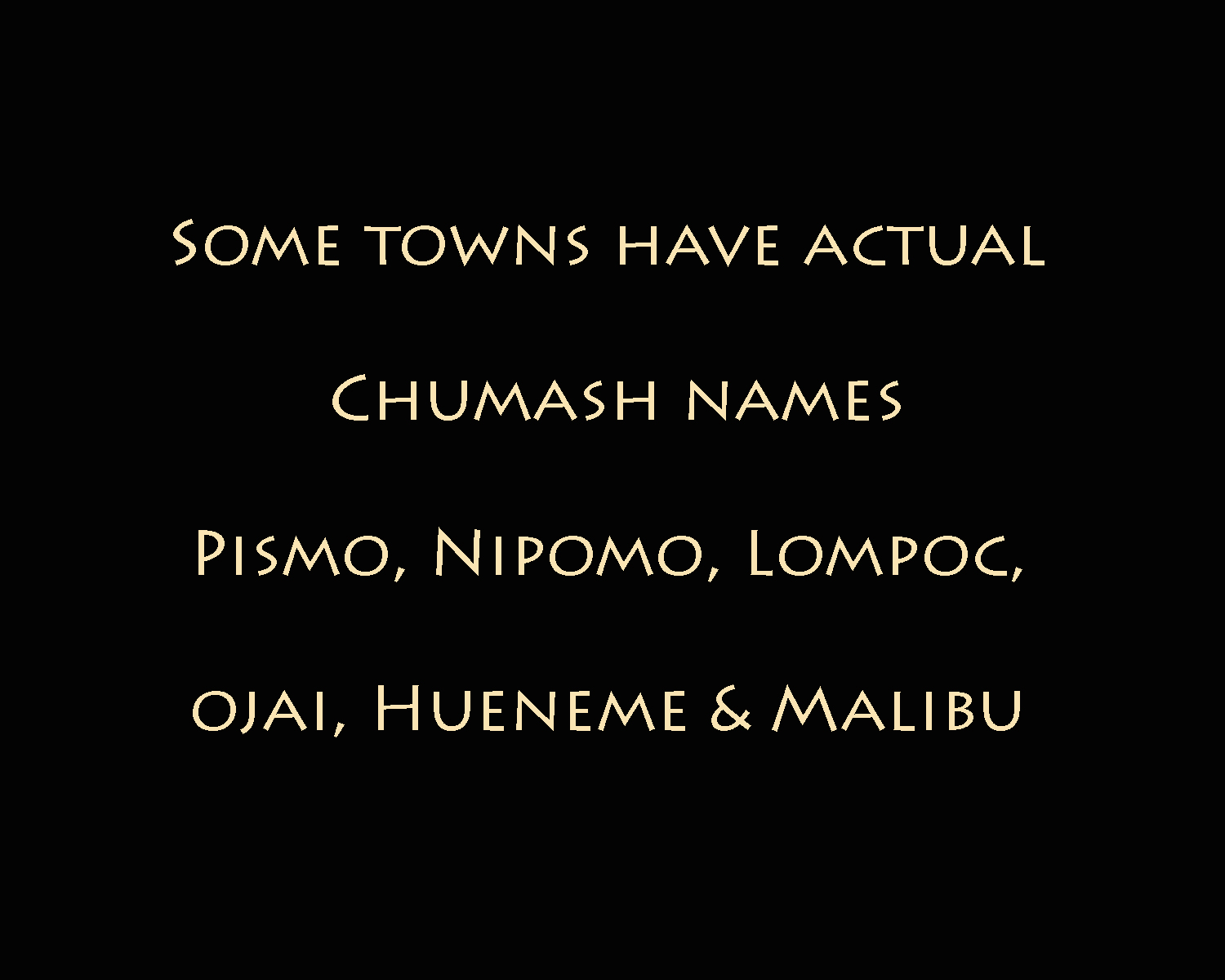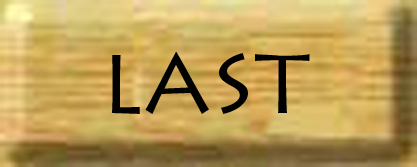
Big Oil and Smudge Pots
On most of my adventures school kids were not preparing for nuclear war.
The Santa Barbara coast has its share of petroleum deposits. Summerland, about 5 miles west of Carpinteria, in the late 1890's was the first place in the world to drill for oil offshore at the end of a pier. There were eventually over 400 wells drilled there with multiple derricks on increasingly long piers. The field was finally exhausted and the structures removed by 1939. Some of the poorly capped wellheads on the seafloor remain a problem today, 80 years later.
In the late 1950's, a vast adjoining reservoir of oil about a mile offshore led to the practice of building offshore oil platforms there, and even farther out into the deeper water of the Santa Barbara Channel where several remain today.
Having originally been explored and colonized by the Spanish, we are accustomed in California to having a large number of Spanish place names. There's a lot of "San-" and "Santa-", meaning "Saint-" or "Holy" names to honor some Catholic Saint or icon. Some are named for their geographic features, Laguna for lagoon, La Cumbre, "the Peak", Paso for "Pass", etc., etc. One town is named for a type Spanish schooner that wrecked in an estuary there and stood as a rotting landmark until a mission-era settlement nearby formalized the moniker. Another location was given an Aztec name because it reminded the Spanish explorers of a site in Mexico. Some place names are the actual Chumash names; Pismo, Ojai and Malibu. And some names were Spanish descriptions of what the Chumash had going on there when they arrived. La Carpinteria was named by the first Spanish expedition of exploration of the California Coast, led by Gaspar Portola in 1769. The Chumash called it "Mishopsno", but the Spanish named it "the carpenter shop" because of the canoe building activity under a sycamore tree beside the creek.
As any beach-going kid in Southern California knows, there is a constant current in the water along the shore. It flows relentlessly down the Pacific coast, from the Gulf of Alaska all the way down the Mexico. If you play in the water, boogie board, bodysurf or whatever, in a few minutes you'll find yourself further and further down the beach, because every time you take your feet off the bottom, you are being carried along by the background current, barely noticed because it all moves with you.
The natural range of California's coastal redwood trees runs from Oregon to Big Sur with isolated groves further south, but still it's at least 200 miles from Carpinteria north to the first substantial old growth redwood grove. The peak of their range is north of San Francisco, 400 miles or more from Carpinteria. When for whatever natural reason a grown redwood fell into a northern California river and was washed into the sea, it could drift in that north to south current for years, making stops as driftwood on the beaches, be dislodged again and finally arrive in near enough to Carpinteria to be towed up its little estuary to the canoe builders.
Redwood has straight grain and is easily split into planks, lightweight and resistant to water damage. It's the perfect material for making a plank canoe, a tomol. Planks were lashed with strips of sealskin, and the seams were sealed with a mixture of the abundant tar and pine pitch.
So Mishopsno tomol builders were blessed by the occasional landfall of a floating redwood log and the natural tar seeps.
In all the world, there are five spots that had a naturally occurring "lake" of liquid tar on the surface, and three are in California. One is near the oil fields of the Central Valley; one is the famous La Brea Tar Pits in Los Angeles; and the third was in Carpinteria. Underlying a broad expanse of the high coastal bluff to the east of town was an enormous layer of tar. You can see it in cross section looking up at the bluff from the beach.
Starting in the 1890's and lasting almost 30 years, this area was used as an asphalt mine on large scale, producing tar for use in building new smooth roadways for the horseless carriages far and wide. This ended almost 20 years before I was born, but my mom had memories of it in operation. It stunk, of course. In order to be used as roofing tar, it had to be melted down and filtered. To make the melting fire, of course, tar was burnt. When the wind was wrong it stunk up the whole town, worse than a refinery. When the asphaltum was melted and strained, the result was the same mixture of the skeletal remains of saber toothed cats and dire wolves that were recovered from the La Brea Tar Pits, and the bones of some Chumash.
One girl in our high school class lived in the "Higgins House"; a large Victorian on the edge of the asphalt mining area. In a hallway of the house was a large bookcase with glass doors that displayed many of those finds, some of which reside in the Carpinteria Valley Museum today.
The workings of the tar mines were gone by the time I came along. One of the former asphalt pit was allowed to fill with seeping tar and it was used as the town dump. I remember that. Once our dog, Honeychild, a golden cocker spaniel, wandered into the tar lake and it was a terrible mess getting her out and getting the tar off her golden fur.
That kind of air pollution was gone long before the 1950's. Carpinteria Valley had become mainly occupied with agriculture. You might think that a cleaner industry, which it was for the most part. Except when a freeze was expected. To save the lemon crop, farmers fired up their smudge pots. A smudge pot was a contraption that looked like a small and a large stove pipe joined together on top of a 5 gallon fuel reservoir. It was designed to use the crudest type of diesel fuel and fuel oil to heat the orchard by filling the area between the trees with warm dark smoke. It took a lot of them, and they were lit in the early hours of the morning, as the coldest frost comes just before dawn.
When it was going to freeze, often the air would be very still and the smoke would hang amongst trees and drift slowly across the town, and linger. Someone came to the conclusion that keeping the air moving would also protect the fruit from freezing on the tree, and they devised the wind machine which was just a big electric motor with a propeller on the top of a steel column.
There was a big freeze in Southern California in 1949. I remember it because it snowed in San Pedro where we lived at the time. After that if a farmer could afford the outlay, he would replace his smudge pots so as not have to handle all that fuel, breathe cleaner air, and not have to get up in the middle of the night to light the fires. So smudge pots were phased out in the next few decades. By the time I was in high school in Carpinteria, you could hear the wind machines start up in the night just as the air temperature dropped below a certain point, and the orchard stink bombs were becoming relics of a past before the idea that something should be done about air pollution.





Copyright © 2022 John Oliver
All Rights Reserved
mail@unclejohnsweb.com

The Santa Barbara coast has its share of petroleum deposits. Summerland, about 5 miles west of Carpinteria, in the late 1890's was the first place in the world to drill for oil offshore at the end of a pier. There were eventually over 400 wells drilled there with multiple derricks on increasingly long piers. The field was finally exhausted and the structures removed by 1939. Some of the poorly capped wellheads on the seafloor remain a problem today, 80 years later.
In the late 1950's, a vast adjoining reservoir of oil about a mile offshore led to the practice of building offshore oil platforms there, and even farther out into the deeper water of the Santa Barbara Channel where several remain today.
Having originally been explored and colonized by the Spanish, we are accustomed in California to having a large number of Spanish place names. There's a lot of "San-" and "Santa-", meaning "Saint-" or "Holy" names to honor some Catholic Saint or icon. Some are named for their geographic features, Laguna for lagoon, La Cumbre, "the Peak", Paso for "Pass", etc., etc. One town is named for a type Spanish schooner that wrecked in an estuary there and stood as a rotting landmark until a mission-era settlement nearby formalized the moniker. Another location was given an Aztec name because it reminded the Spanish explorers of a site in Mexico. Some place names are the actual Chumash names; Pismo, Ojai and Malibu. And some names were Spanish descriptions of what the Chumash had going on there when they arrived. La Carpinteria was named by the first Spanish expedition of exploration of the California Coast, led by Gaspar Portola in 1769. The Chumash called it "Mishopsno", but the Spanish named it "the carpenter shop" because of the canoe building activity under a sycamore tree beside the creek.
As any beach-going kid in Southern California knows, there is a constant current in the water along the shore. It flows relentlessly down the Pacific coast, from the Gulf of Alaska all the way down the Mexico. If you play in the water, boogie board, bodysurf or whatever, in a few minutes you'll find yourself further and further down the beach, because every time you take your feet off the bottom, you are being carried along by the background current, barely noticed because it all moves with you.
The natural range of California's coastal redwood trees runs from Oregon to Big Sur with isolated groves further south, but still it's at least 200 miles from Carpinteria north to the first substantial old growth redwood grove. The peak of their range is north of San Francisco, 400 miles or more from Carpinteria. When for whatever natural reason a grown redwood fell into a northern California river and was washed into the sea, it could drift in that north to south current for years, making stops as driftwood on the beaches, be dislodged again and finally arrive in near enough to Carpinteria to be towed up its little estuary to the canoe builders.
Redwood has straight grain and is easily split into planks, lightweight and resistant to water damage. It's the perfect material for making a plank canoe, a tomol. Planks were lashed with strips of sealskin, and the seams were sealed with a mixture of the abundant tar and pine pitch. So Mishopsno tomol builders were blessed by the occasional landfall of a floating redwood log and the natural tar seeps.
In all the world, there are five spots that had a naturally occurring "lake" of liquid tar on the surface, and three are in California. One is near the oil fields of the Central Valley; one is the famous La Brea Tar Pits in Los Angeles; and the third was in Carpinteria. Underlying a broad expanse of the high coastal bluff to the east of town was an enormous layer of tar. You can see it in cross section looking up at the bluff from the beach.
Starting in the 1890's and lasting almost 30 years, this area was used as an asphalt mine on large scale, producing tar for use in building new smooth roadways for the horseless carriages far and wide. This ended almost 20 years before I was born, but my mom had memories of it in operation. It stunk, of course. In order to be used as roofing tar, it had to be melted down and filtered. To make the melting fire, of course, tar was burnt. When the wind was wrong it stunk up the whole town, worse than a refinery. When the asphaltum was melted and strained, the result was the same mixture of the skeletal remains of saber toothed cats and dire wolves that were recovered from the La Brea Tar Pits, and the bones of some Chumash.
One girl in our high school class lived in the "Higgins House"; a large Victorian on the edge of the asphalt mining area. In a hallway of the house was a large bookcase with glass doors that displayed many of those finds, some of which reside in the Carpinteria Valley Museum today.
The workings of the tar mines were gone by the time I came along. One of the former asphalt pit was allowed to fill with seeping tar and it was used as the town dump. I remember that. Once our dog, Honeychild, a golden cocker spaniel, wandered into the tar lake and it was a terrible mess getting her out and getting the tar off her golden fur.
That kind of air pollution was gone long before the 1950's. Carpinteria Valley had become mainly occupied with agriculture. You might think that a cleaner industry, which it was for the most part. Except when a freeze was expected. To save the lemon crop, farmers fired up their smudge pots. A smudge pot was a contraption that looked like a small and a large stove pipe joined together on top of a 5 gallon fuel reservoir. It was designed to use the crudest type of diesel fuel and fuel oil to heat the orchard by filling the area between the trees with warm dark smoke. It took a lot of them, and they were lit in the early hours of the morning, as the coldest frost comes just before dawn.
When it was going to freeze, often the air would be very still and the smoke would hang amongst trees and drift slowly across the town, and linger. Someone came to the conclusion that keeping the air moving would also protect the fruit from freezing on the tree, and they devised the wind machine which was just a big electric motor with a propeller on the top of a steel column.
There was a big freeze in Southern California in 1949. I remember it because it snowed in San Pedro where we lived at the time. After that if a farmer could afford the outlay, he would replace his smudge pots so as not have to handle all that fuel, breathe cleaner air, and not have to get up in the middle of the night to light the fires. So smudge pots were phased out in the next few decades. By the time I was in high school in Carpinteria, you could hear the wind machines start up in the night just as the air temperature dropped below a certain point, and the orchard stink bombs were becoming relics of a past before the idea that something should be done about air pollution.





Copyright © 2022 John Oliver
All Rights Reserved
mail@unclejohnsweb.com

All Rights Reserved
mail@unclejohnsweb.com
